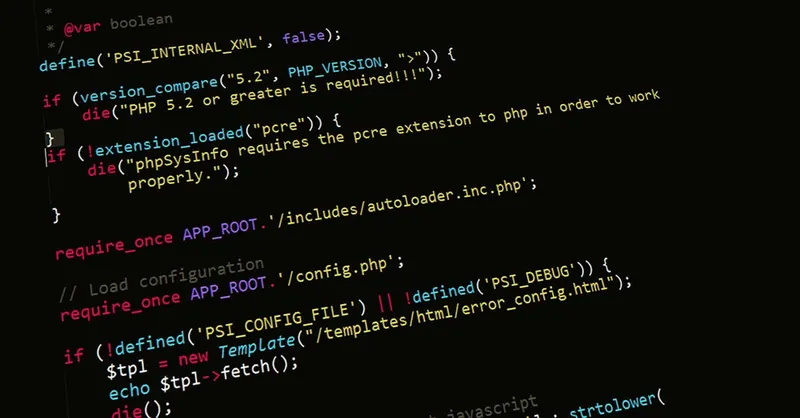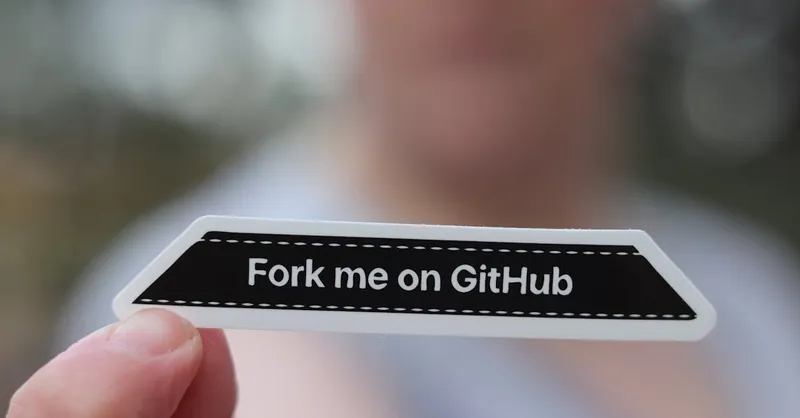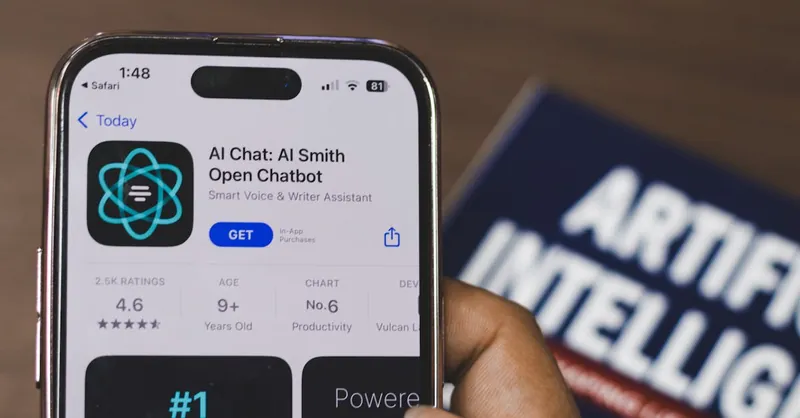Top Ideas for Coding Passive Income Streams 2024
Category: Programming
Unlock Creative Coding for Passive Income in 2024
If you’re a programmer or developer looking to turn your coding skills into steady, reliable revenue without clocking endless hours, you’re in the right place. The landscape of passive income through programming is evolving rapidly in 2024, influenced by new technologies, platforms, and trends like automation, cloud services, and AI integration. Your challenge? Identifying projects that not only capitalize on your technical expertise but also generate income with minimum ongoing effort. This article cuts through the noise to spotlight proven and trending coding ideas geared toward passive income streams that fit today’s market realities. Whether you’re a seasoned coder searching for fresh ways to diversify your income or an innovative developer eager to build scalable projects with long-term payoff, this guide offers a structured approach. We explore a range of creative programming ideas, from micro-SaaS solutions and subscription APIs to digital product sales and no-code automation tools. What sets this post apart is a clear, actionable framework informed by what’s currently working for programmers worldwide, ensuring you spend less time guessing and more time building. Stick with us, and you’ll discover new avenues to monetize your coding prowess that align perfectly with your skills and lifestyle goals.
- Unlock Creative Coding for Passive Income in 2024
- Micro-SaaS Products: Niche Solutions with Recurring Revenue
- Creating and Selling APIs: Unlocking Scalable Passive Income Through Developer Tools
- Automated Trading Bots and Financial Tools: Code-Driven Investment Aids for Passive Revenue
- Developing and Monetizing Mobile Apps: Leveraging App Stores for Sustainable Passive Income
- Digital Products and Code Marketplaces: Selling Themes, Plugins, Templates, and Snippets for Passive Income
- Building Educational Coding Content and Tools: Create Passive Income with Tutorials, Courses, and Interactive Platforms
- No-Code and Low-Code Automation Solutions: Designing Workflow Automations for Licensing Revenue
- Open Source with Sponsorship and Premium Add-ons: Cultivating Revenue through Community and Value-Added Features
- ChatGPT and AI Integrations for Passive Revenue: Developing AI-Powered Tools and Chatbots
- Leveraging Cloud Computing and Serverless Architectures: Building Scalable, Low-Maintenance Applications for Cost-Efficient Passive Income
Micro-SaaS Products: Niche Solutions with Recurring Revenue
One of the most lucrative and sustainable coding passive income streams in 2024 is building micro-SaaS products—small, focused software-as-a-service applications designed to solve very specific pain points for businesses or consumers. Unlike broad SaaS platforms, micro-SaaS targets narrow niches where competition is limited but demand is consistent, enabling developers to charge recurring subscription fees that generate steady, predictable cash flow. The beauty of micro-SaaS lies in its scalability combined with relatively low maintenance once the product is stable and automated.
To succeed with a micro-SaaS product, identify a precise problem or workflow bottleneck that larger tools overlook or overcomplicate. This could range from specialized analytics dashboards, streamlined project management features tailored to a niche industry, to automated compliance checkers for freelancers or small businesses. To maximize passive income potential, focus on these key areas:
- Automate onboarding and support to reduce manual involvement and improve customer retention.
- Use subscription pricing models with monthly or annual plans to build steady recurring revenue.
- Leverage cloud infrastructure and APIs to minimize hosting and maintenance overhead.
- Continuously gather feedback but limit feature creep to keep the product lean and efficient.
Building a micro-SaaS in 2024 is particularly advantageous because of the availability of no-code integrations, serverless computing, and AI-powered enhancements that lower the barrier for developers while enhancing end-user value. By addressing a well-defined niche and implementing smart automation, your micro-SaaS can become a highly scalable passive income engine with minimal ongoing effort.

Image courtesy of Markus Winkler
Creating and Selling APIs: Unlocking Scalable Passive Income Through Developer Tools
In 2024, developing and monetizing APIs has emerged as a highly effective passive income strategy for programmers aiming to leverage their coding expertise at scale. APIs (Application Programming Interfaces) serve as the backbone for countless apps and services, and businesses—ranging from startups to large enterprises—are willing to pay for reliable, well-documented APIs that solve specific problems or provide valuable data access. By creating APIs that address essential functions or niche requirements, you can establish a steady revenue stream through tiered subscriptions or pay-per-use pricing models that cater to both indie developers and corporate clients.
To maximize passive income through API creation, focus on these key strategies:
- Identify market gaps or underserved API categories such as specialized data processing, authentication services, AI model integration, or real-time analytics.
- Design tiered pricing plans offering free, pro, and enterprise levels to capture a broad spectrum of users—free tiers drive adoption, while premium plans fuel recurring revenue.
- Implement usage-based billing, charging customers based on API calls or data volume to scale income proportionally to customer success.
- Build comprehensive API documentation and developer portals that minimize onboarding friction and reduce support overhead.
- Leverage cloud platforms with scalable infrastructure and automated monitoring to ensure uptime and performance reliability with low maintenance effort.
Creating APIs as passive income streams not only taps into the explosive growth of the developer economy but also aligns perfectly with trends like cloud computing and microservices architecture. With minimal upkeep after launch, your API can serve a growing ecosystem of users worldwide, converting your coding skills into a high-margin, recurring revenue source that evolves with demand.

Image courtesy of RealToughCandy.com
Automated Trading Bots and Financial Tools: Code-Driven Investment Aids for Passive Revenue
In 2024, building automated trading bots and financial tools stands out as a powerful coding passive income stream, especially for developers with a knack for finance, data analysis, and algorithmic modeling. These tools leverage programmatic strategies to execute trades autonomously on stock markets, crypto exchanges, or forex platforms, capitalizing on market inefficiencies or momentum without constant human intervention. When properly coded and optimized, trading bots can generate consistent revenue by operating 24/7, managing risk, and adapting to changing market conditions based on predefined algorithms.
To create successful automated trading systems as passive income streams, focus on these critical components:
- Robust algorithm design: Develop strategies based on technical indicators, machine learning models, or statistical arbitrage that have been backtested thoroughly.
- Real-time data integration: Use APIs from reliable financial data providers to feed accurate, high-frequency market data into your bots.
- Risk management features: Incorporate stop-loss, take-profit, and portfolio diversification mechanisms to protect capital and ensure sustainable growth.
- Cross-platform compatibility: Build bots that can operate on multiple exchanges or trading platforms, increasing usability and market reach.
- User-friendly interfaces and setup: Offer intuitive dashboard tools or configuration files so users can customize parameters without coding expertise.
- Subscription or licensing models: Monetize your bots through recurring fees or usage-based licenses, enabling steady passive income.
Beyond trading bots, complementary financial tools such as portfolio trackers, tax calculators for crypto assets, or automated rebalancing scripts can also generate passive revenue. By applying software automation to financial markets, you transform your programming skills into dynamic income engines that work around the clock — capturing opportunities while you focus on other ventures. This fusion of coding and finance taps into the explosive growth of digital assets and algorithmic trading, making 2024 an ideal year to launch scalable automated investment aids.

Image courtesy of Alesia Kozik
Developing and Monetizing Mobile Apps: Leveraging App Stores for Sustainable Passive Income
In 2024, mobile app development remains one of the most accessible and scalable passive income streams for programmers, thanks to the vast user bases of platforms like Apple’s App Store and Google Play. By creating mobile apps that address specific user needs or entertain with innovative features, developers can tap into continuous revenue flows with relatively low ongoing effort once the app is live. The key to success lies in implementing proven monetization strategies tailored for sustained income, including freemium models, in-app purchases (IAPs), and ad-based revenue.
Top Strategies to Monetize Mobile Apps for Passive Income
- Freemium Model: Offer a basic version of your app for free while locking premium features or content behind a subscription or one-time purchase. This approach encourages broad adoption while converting engaged users into paying customers.
- In-App Purchases: Sell digital goods, upgrades, or consumables directly inside the app. Virtual currencies, premium tools, or unlocking levels are common IAP examples that boost revenue without deterring free users.
- Ad-Based Revenue: Integrate non-intrusive ads such as rewarded videos, banner ads, or native ads using platforms like Google AdMob or Unity Ads. This model allows you to monetize free users continuously and scale income as your user base grows.
- Subscription Plans: Implement monthly or yearly subscriptions for ongoing access to exclusive content, services, or features—especially effective in utility, health, education, and productivity apps.
- Optimize User Engagement and Retention: Use push notifications, periodic updates, and personalized content to maintain active users, maximizing both ad impressions and conversion to paid tiers.
By focusing on user experience and leveraging app store analytics to refine your monetization tactics, mobile apps can generate reliable passive income streams with minimal maintenance. Advances in cross-platform frameworks like Flutter and React Native speed up development and reduce costs, while cloud backend services enable seamless scalability. For developers seeking to build long-term passive revenue, mobile apps remain an essential pillar in 2024’s programming income portfolio.

Image courtesy of Photo By: Kaboompics.com
Digital Products and Code Marketplaces: Selling Themes, Plugins, Templates, and Snippets for Passive Income
In 2024, one of the most straightforward yet highly effective passive income streams for developers is creating and selling digital products such as themes, plugins, templates, and code snippets. Whether you specialize in front-end frameworks, CMS platforms like WordPress, e-commerce tools, or general-purpose libraries, packaging your code into reusable, easy-to-install assets opens multiple revenue channels. Platforms like GitHub Marketplace, ThemeForest, CodeCanyon, and even your own custom website enable you to reach millions of potential buyers actively seeking quality development resources.
Why Focus on Digital Products and Code Marketplaces?
- Scalability and Automation: Once published, your products can be sold repeatedly without extra development effort. Automated distribution and licensing systems handle transactions and delivery, minimizing your workload.
- High Market Demand: Developers, businesses, and hobbyists consistently look for pre-built solutions that save time and reduce complexity, creating a steady demand for well-crafted themes, plugins, and templates.
- Recurring Revenue Opportunities: Many digital products support subscription or update licenses, providing ongoing income as customers pay for updates, support, or premium features.
- Brand Building and Authority: Selling quality digital products enhances your reputation, expands your professional network, and establishes you as a niche expert, which can drive additional consulting or custom development gigs.
Tips for Maximizing Sales on Code Marketplaces
- Focus on Niche Needs: Identify gaps in popular platforms or solve specific user pain points, such as high-performance WordPress themes for bloggers, lightweight React component libraries, or specialized e-commerce plugins.
- Maintain Regular Updates: Keep your products compatible and secure by periodically releasing updates, which encourages renewals and builds customer trust.
- Offer Clear Documentation and Demo: Comprehensive README files, live demos, and tutorials reduce buyer hesitation and support requests.
- Leverage SEO and Marketplace Optimization: Use targeted keywords in your product titles and descriptions to boost visibility on search engines and marketplaces alike.
- Engage with Customers: Respond to reviews and support queries promptly to foster positive feedback and improve your product rankings.
By strategically building and marketing digital coding assets on established marketplaces or your own platform, you create an evergreen passive income source fueled by the continuous demand for ready-to-use development tools. In 2024, this approach remains a cornerstone for developers seeking to monetize their expertise with minimal ongoing coding, making it an essential addition to your passive income portfolio.

Image courtesy of Pixabay
Building Educational Coding Content and Tools: Create Passive Income with Tutorials, Courses, and Interactive Platforms
In 2024, building educational coding content and tools represents a highly effective passive income stream for developers who enjoy sharing their expertise while generating ongoing revenue. Whether through comprehensive coding tutorials, structured online courses, or dynamic interactive platforms, programming education continues to see explosive demand fueled by the rapid growth of technology careers worldwide. By creating high-quality, niche-focused educational resources, you can attract learners globally and monetize through memberships, one-time purchases, or subscription models that provide steady, scalable income.
To succeed in this space, focus on these critical elements:
- Develop targeted tutorials and courses that address specific technologies, programming languages, or practical project-building skills sought after by learners eager to level up their abilities.
- Leverage platforms with built-in audiences—such as Udemy, Teachable, or your own website with membership features—to streamline content delivery and payment processing.
- Incorporate interactive coding environments or quizzes to boost learner engagement and completion rates, which enhances course reviews and drives more sales.
- Offer tiered membership plans or bundles combining tutorials, downloadable resources, and community access to maximize customer lifetime value.
- Regularly update your content to keep pace with evolving industry standards, programming frameworks, and developer tools, ensuring your courses remain relevant and authoritative.
By positioning yourself as a knowledgeable educator tapping into a growing market of coders and tech professionals, you can transform your programming skills into a scalable passive income stream with low ongoing maintenance. Moreover, educational content offers strong SEO benefits, as high-demand keywords—such as “learn Python programming,” “JavaScript tutorials for beginners,” or “best React course”—drive organic traffic that converts efficiently. With consistent marketing and quality content, building educational coding tools and courses is a powerful way to monetize your expertise throughout 2024 and beyond.

Image courtesy of cottonbro studio
No-Code and Low-Code Automation Solutions: Designing Workflow Automations for Licensing Revenue
In 2024, no-code and low-code automation platforms have surged in popularity, opening new passive income opportunities for programmers who can design effective workflow automations and business integrations without building complex systems from scratch. These tools empower non-technical business users to streamline processes and increase productivity, creating a massive market demand for ready-made automations that solve common pain points across industries. By leveraging platforms like Zapier, Integromat (Make), Microsoft Power Automate, and n8n, developers can create specialized automations or integrations that connect apps, automate repetitive tasks, and orchestrate complex workflows.
Why Build No-Code/Low-Code Automated Solutions?
- Tap into a growing business user base: Many organizations now rely on no-code tools for rapid workflow development, but lack the time or skill to design custom solutions, positioning you as a valuable expert.
- Recurring licensing and subscription revenue: Sell your automations as templates or integrations with monthly subscription or licensing fees, generating steady passive income.
- Minimal maintenance and updates: Once deployed and tested, most no-code automations require only occasional adjustments to accommodate API changes or feature requests.
- Wide applicability: Automations for lead generation, CRM syncing, invoicing, email marketing, or inventory management appeal to diverse industries , increasing market reach.
To build scalable passive income streams with no-code and low-code automation tools, focus on creating high-value integrations that combine popular SaaS platforms, enhancing their core functionalities. For instance, automating data flow between CRMs and marketing platforms or syncing customer support tickets with project management tools saves businesses significant time and resources. Additionally, packaging your solutions as easy-to-install templates or managed automation services lets you monetize your expertise while minimizing ongoing workload.
By positioning yourself as a no-code automation designer catering to business productivity improvements, you harness one of the fastest-growing passive income trends of 2024. Your coding skills combined with no-code tool mastery can unlock lucrative licensing deals and subscription models that scale effortlessly as demand grows.

Image courtesy of MART PRODUCTION
Open Source with Sponsorship and Premium Add-ons: Cultivating Revenue through Community and Value-Added Features
In 2024, open-source projects continue to thrive not only as collaborative innovations but also as sustainable passive income streams when combined with sponsorship models, premium add-ons, and consulting opportunities. Many developers build popular libraries, tools, or frameworks that gain traction within developer communities and attract corporate users who rely heavily on these solutions. By strategically leveraging platforms like GitHub Sponsors, Open Collective, Patreon, or Buy Me a Coffee, programmers can monetize their open-source contributions through recurring sponsorships that provide stable, low-effort income while maintaining community goodwill.
To scale revenue beyond sponsorships, offering paid premium features, enhanced integrations, or priority support packages can effectively convert free users into paying customers without alienating the open-source base. Additionally, open-source maintainers who establish themselves as experts often unlock lucrative consulting, custom development, or training contracts with organizations adopting their projects, creating hybrid passive-active income channels.
Key tactics to maximize passive income from open-source projects include:
- Build a strong community around your project by fostering engagement, clear documentation, and transparent roadmaps that invite contributions and long-term users.
- Introduce premium tiers or extensions such as advanced analytics, enterprise-grade security modules, or cloud-hosted SaaS versions that complement the free core.
- Promote sponsorship and donation channels consistently on your repository, project website, and social media to convert goodwill into steady funding.
- Automate billing, licensing, and feature delivery for premium add-ons to minimize manual work and maximize scalability.
- Leverage your open-source reputation to offer expert services, workshops, or certification programs, increasing your passive income ecosystem without direct coding.
By balancing open-source ethos with monetization strategies that emphasize transparency and added value, developers in 2024 can build resilient passive income streams that grow organically with their projects' popularity. This approach not only diversifies income sources but also strengthens professional credibility and community impact, making it an essential strategy for sustainable revenue in the evolving software landscape.

Image courtesy of RealToughCandy.com
ChatGPT and AI Integrations for Passive Revenue: Developing AI-Powered Tools and Chatbots
In 2024, the surge in AI technology—especially large language models like ChatGPT—has unlocked an exciting passive income avenue for developers: building AI-powered tools, chatbots, and integrations that solve real-world problems and monetize through subscription services or API usage fees. By creating intelligent virtual assistants, automated content generators, customer support bots, or niche AI utilities, you can leverage the growing demand for accessible, AI-driven solutions across industries such as customer service, education, marketing, and productivity.
To maximize passive revenue from AI integrations, focus on these essential strategies:
- Develop AI tools that address specific pain points—for example, automated email responders, personalized tutoring bots, legal document summarizers, or code review assistants—that differentiate your product in crowded markets.
- Monetize usage via subscription tiers or API call pricing models to align costs with customer engagement, ensuring scalable and predictable revenue streams.
- Implement seamless onboarding and intuitive interfaces to reduce churn and enhance user experience, which is crucial for retention in subscription-based AI services.
- Leverage existing AI platforms and APIs (OpenAI, Google AI, Microsoft Azure AI) to accelerate development, reduce infrastructure complexity, and ensure reliable model performance.
- Continuously improve your AI models using user feedback and fine-tuning to maintain competitive advantage and deliver greater value over time.
- Integrate AI tools into popular business workflows or SaaS products to expand reach and increase stickiness within professional ecosystems.
Because AI adoption continues to accelerate, developers who build problem-solving AI-powered applications that offer real utility can capture lucrative passive income with relatively low ongoing maintenance after launch. The combination of AI's versatility and subscription-based monetization makes ChatGPT-powered tools a compelling passive income stream in 2024 for coders aiming to capitalize on the booming artificial intelligence market.

Image courtesy of Sanket Mishra
Leveraging Cloud Computing and Serverless Architectures: Building Scalable, Low-Maintenance Applications for Cost-Efficient Passive Income
In 2024, cloud computing and serverless architectures have revolutionized how developers build and monetize applications, offering a powerful foundation for scalable, low-maintenance passive income streams. By leveraging cloud platforms like AWS Lambda, Azure Functions, Google Cloud Functions, and managed services such as Firebase or Cloudflare Workers, you can deploy serverless applications that automatically scale with demand, drastically reduce operational overhead, and optimize hosting costs through pay-as-you-go pricing models. This enables programmers to focus on coding valuable features rather than managing infrastructure, making it an ideal approach for passive income projects like APIs, microservices, or automation workflows.
Why Choose Serverless and Cloud Architectures for Passive Income?
- Scalability on Demand: Serverless functions automatically scale to handle spikes in user traffic or API requests without manual intervention, ensuring reliable performance regardless of growth.
- Minimal Maintenance: Cloud providers handle the underlying infrastructure, security patches, and updates, allowing you to spend less time on DevOps and more on product improvement.
- Cost Efficiency: With per-execution billing, you only pay for the actual compute time your code consumes, lowering the barrier to entry and maximizing profitability for applications with variable or low usage.
- Rapid Development and Deployment: Extensive cloud ecosystems and ready-to-use integrations accelerate development cycles, enabling faster time-to-market for your passive income solutions.
- Global Reach and High Availability: Deploy your applications closer to your users through regional cloud data centers, delivering lower latency and higher uptime, which enhances user satisfaction and retention.
To harness these benefits effectively, consider building projects such as serverless APIs for niche data services, event-driven automation tools, or scalable webhook handlers that can be monetized through subscription plans or usage-based billing. By combining your coding expertise with modern cloud technologies, you create resilient, cost-effective passive income streams that can grow effortlessly while requiring minimal ongoing management. In 2024, mastering cloud-native development and serverless paradigms is indispensable for developers aiming to build sustainable, scalable, and profitable passive income projects.

Image courtesy of Christina Morillo
